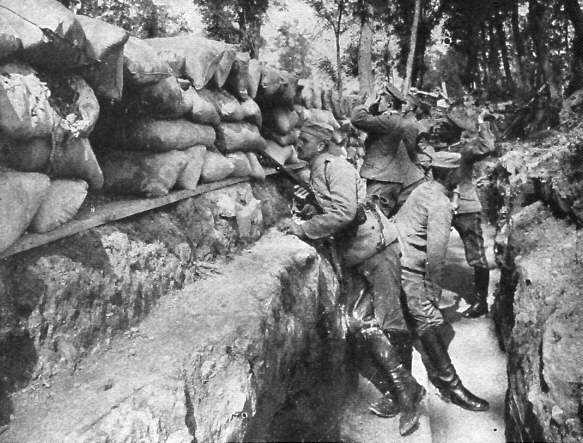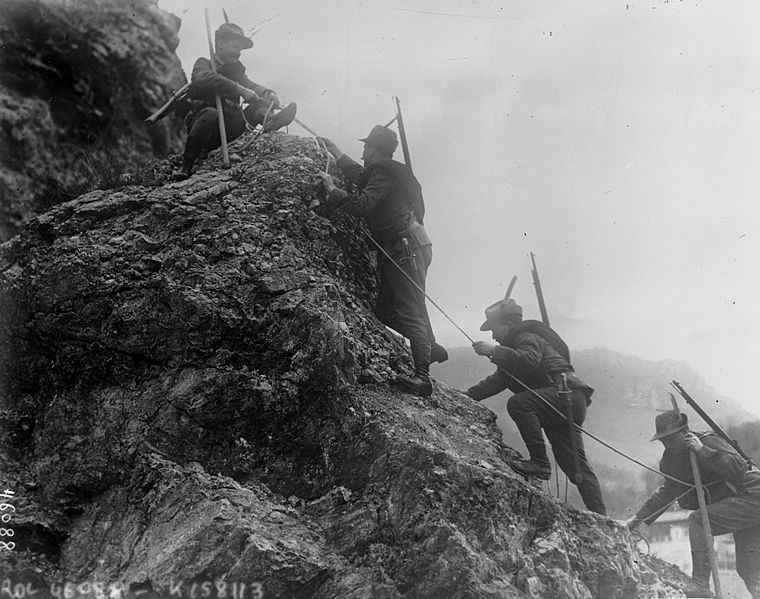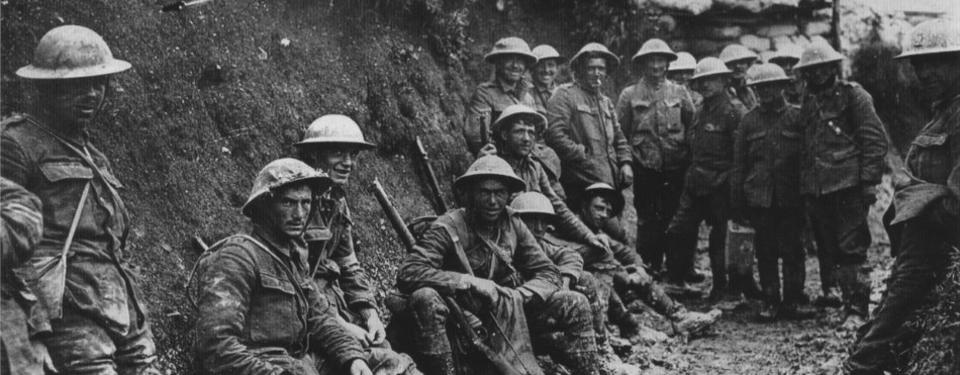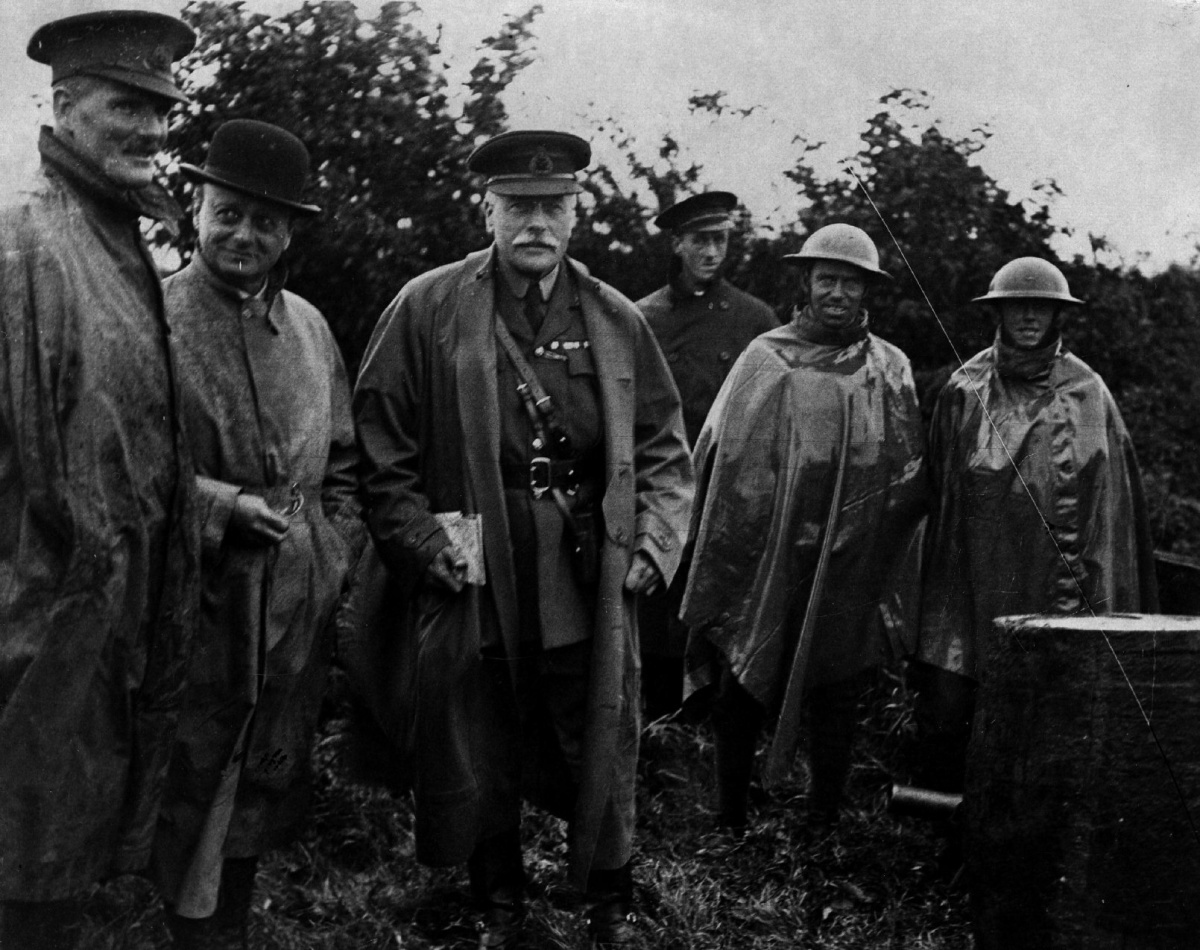Ferocious British Guns, but the Germans Well Dug In; Their Barbed Wire Defenses Hold.
Starvation Growing in Germany; Hundreds Die Each Day
Special to The Great War Project
(26-29 June) The British Command decides to launch its offensive on the River Somme in northern France on this June 29th a century ago.
The Germans have been constructing well protected defenses at the Somme for more than a year. They are prepared for the British assault – indeed the British do not realize just how ready the Germans are.

German trenches at the Somme, July 1916.
But there is trouble brewing inside Germany. “Anti-war feeling is growing,” reports historian Martin Gilbert.
“Deaths from starvation as a result of the Allied blockade were becoming a daily occurrence.”
More than 121,000 deaths in 1916 are attributed to the blockade. That’s 331 deaths a day in Germany, according to Gilbert.
“There were food riots in more than thirty German cities. On June 28th (a century ago) a three-day protest strike began, in which 55,000 German workers took part.”

Berliners scrounge for food, date uncertain.
There is only one anti-war member in the German parliament, the Reichstag. He is Karl Liebknecht, and he is expelled from the Reichstag and sentenced to two years’ hard labor for his opposition to the war, urging Germans not to fight.
At this same moment in the war a century ago, the Allies see some progress on the Italian Front. The Trentino offensive in the Alps is making steady progress against Austrian forces.

The mountainous terrain of the Trentino front, date uncertain.
On the night of June 28th, writes Gilbert, the Austrians unleash a “terrifying bombardment with hydrocyanide gas shells causing grave injury to more than 6000 sleeping Italians.” The gas blows back into the Austrian positions and more than a thousand Austrian troops are injured.
At the same moment on the Russian Front, reports Gilbert, “The Austrians were mauled at the Battle of Kolomea (now western Ukraine). There, the Russians take 10,000 prisoners.”
And on the Western Front, the commander-in-chief Field Marshall Douglas Haig, sets June 29th for the start of the ground offensive at the Somme.
The enormous British artillery bombardment is in its fifth day, the largest such barrage of the war.
But on June 29th, Haig feels the conditions are not right for the ground invasion, and he postpones it until July 1st.
Historian Adam Hochschild describes the British plan as it is conceived by Field Marshall Haig. “British troops, the plan went, were to move forward across no man’s land in successive waves. Everything was precise; each wave would advance in a continuous line 100 yards in front of the next as a steady pace of one hundred yards a minute.”

British troops await signal to attack, Somme July 1916.
Problems with this plan emerge quickly, according to Hochschild. “How were they to be safe from the German machine-gun fire that had taken such a deadly toll” in other battles?
The British answer: artillery, the overwhelming artillery assault, one gun every seventeen yards of front line. A million and a half shells hit the German emplacements over five days. The British command believes nothing can survive this onslaught.
It appears the British artillery, despite its intensity, ends too soon.
The shelling does not do its job adequately, writes war historian John Keegan. It is supposed to cut the German barbed wire defensives so British troops would have a clean path through the wire. But the wire is not cut cleanly.

Field Marshal Douglas Haig visiting troops, date and place uncertain.
Haig also expects the bombardment to drive German troops out of their trenches.
What the British infantry will discover when the ground attack begins, writes Keegan, is that they are attacking “trenches filled with Germans fighting for their lives.”
